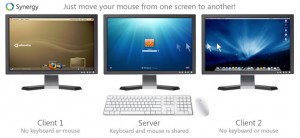My Macbook Air mid 2011 was one of the best buys in my life. I love this piece of hardware. I have been using GNU/Linux on desktop for more than 10 years. But changes in recent years like KDE 4, Gnome 3, systemd made me think about switching.
On the other side I have been using Mac in parallel for two years in 2003. I had iBook G3 and it was also beautiful piece of hardware and great system. Many of my knowledge was born working in internet cafe on this device (funny is that I have been doing best job with no money, with only 12.1 inch screen – but this should be subject of other post).
So, this experience made me thing that it might be time to switch on desktop. To describe reasons briefly – simplified workflow (Mac Linux sync), consistent GUI and apps, no more tuning keyboard shortcuts to work same way on both platforms.
Cons was only that Mac Pro is expensive as hell and I have a pretty new desktop home. I do not like to spend that much of money (e.g. 120 000 CZK) for just a computer. Time to build Hack Pro!
If this decision came few months ago when I was building my computer i would go way of buying components based on this guide.
But I already had my hardware so let’s try it. These are my hardware specs (links to shop I bought hardware):
- MB ASROCK Z68 Pro3-M, 1155, DDR3, mATX
- SEASONIC S12II-620 – 620W (80Plus Bronze)
- CPU Intel Core i3 2120 (3,3GHz, 3MB, socket 1155), BOX
- COOLER Arctic Cooling Freezer Xtreme (rev. 2) Extreme packing
- RAM Patriot 8GB DDR3 1333MHz CL9 (PSD38G13332H) (I have four of them)
- HDD SSD Kingston V200, SATA III, 2,5″ – 256GB
- NET TP-LINK TL-WN881ND, wifi, PCI-E
- VGA nV ZOTAC GT620 Synergy edition, 2GB, DDR3, PCI-E
- HDD Seagate Barracuda 7200.12, 3,5″ SATA/600 NCQ, 32MB – 1TB
- DVD-R/+R Samsung SH-222BB, SATA, black, bulk
- COOLER Arctic Fan F12 PWM
- CASE ASUS TA-K52 HD ATX Black/Red/Black 2USB2/BZ/80FAN1
- LCD 24″, Benq GL2450 (I have two of them)
- REPRO Logitech Speaker System Z323
- KO ICY BOX, reader IB-864-B
I’m very lucky guy – this setup was created for Linux (to work like a charm), but when I made decision about switching to hackintosh all seemed great. Building a hackintosh is always (at least according to how-to’s) about supported motherboard and graphic adapter. After quick googling hardware hardware has been looking good.
Next part will cover basic setup of my hackintosh – creating of install media, and USB installation.

